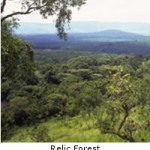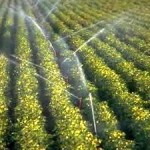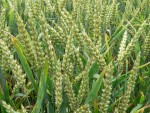 Washington, D.C. – On the plains of Minas Gerais, Brazil, the forestry and iron industries are changing their ways and are being rewarded with the first ever issuance of carbon credits for a forestry project under the Kyoto Protocol’s Clean Development Mechanism (CDM).
Washington, D.C. – On the plains of Minas Gerais, Brazil, the forestry and iron industries are changing their ways and are being rewarded with the first ever issuance of carbon credits for a forestry project under the Kyoto Protocol’s Clean Development Mechanism (CDM).
“As this project shows, CDM is an important tool that promotes climate change mitigation and helps the iron and steel sectors become more sustainable. The Bank is also working with the State of Minas Gerais to promote the adoption of this project model to help achieve the State’s goal of increasing the use of renewable charcoal in these sectors and contribute to the larger goal of reducing greenhouse gas emissions,” says Deborah L. Wetzel, World Bank Director for Brazil.
The Plantar Group, specializing in forestry and pig iron production, is leading the way by establishing 11,600 hectares of sustainably managed tree plantations, which sequester carbon dioxide and provide a source for carbon-neutral charcoal while supporting the protection of indigenous forests and biodiversity. The Brazilian company is aiming to end the historic deficit of renewable wood to fuel their industry, and the revenue from carbon finance enables the industry to use previously degraded areas while conserving large areas of native cerrado forests.
“This is an excellent example of industry working in a sustainable fashion to plant trees and protect native forests. We have been working with the Plantar Group for a decade and the fact that they are the first company worldwide to generate tCERs is a testament to their innovation and dedication,” said Joëlle Chassard, Manager of the Carbon Finance Unit of the World Bank.
The UNFCCC on April 13 issued more than 4 million temporary Certified Emission Reductions (tCERs) to the Plantar Reforestation Project, making it the first worldwide. Afforestation/Reforestation (A/R) CDM projects can only issue credits once per commitment period, and many are, therefore, waiting toward the end of the Kyoto Protocol’s first commitment period to maximize the number of credits issued. While this is the first forestry project to date to issue such credits, many others are currently undergoing verification.
This project, supported by the World Bank’s Prototype Carbon Fund and the BioCarbon Fund since 2001, was one of the first carbon finance projects, developed before the Kyoto Protocol entered into force. It demonstrates how sustainably managed plantations can generate new carbon stock, substitute for the use of fossil fuels and also help take the pressure off the unique ecosystems of native forests. This pioneering work is an example of finding a sustainable balance between industry and nature, and of ways in which the private sector can use previously deforested and abandoned lands, thereby decreasing the pressure on native forests. This approach helps promote the conservation of native forests and their unique biodiversity, while securing employment in rural areas.
“We are truly honored to have accomplished such a milestone, after more than a decade of dedicated teamwork. It is rewarding to know that the projects pioneering work contributed to advancing broader policies and institutional arrangements for climate change mitigation. We are grateful to the World Bank’s early support and to the many partners who have helped us along the way,” said Fábio Marques, Superintendent at Plantar Carbon.
For the past seven years, the BioCarbon Fund has supported more than 20 A/R CDM projects in 15 countries, several of which are now moving toward issuance. But carbon finance projects in the afforestation/reforestation area have been more challenging to develop than energy or industrial projects because their implementation is, resource-intensive and time consuming, and the capacity required is limited. Furthermore, the credits that are issued are temporary, and UN regulations require that the certificates are re-verified every 5 years after ensuring that the trees are still standing. The World Bank recently published an analysis of this experience, and the third tranche of the BioCarbon Fund proposes to use these lessons learned to improve the effectiveness of the interventions and to scale up initiatives in the land use sector.
Source: The World Bank.














